How Choreographer Kennady Schneider Helped Transform Mikey Madison Into an Expert Pole Dancer in 'Anora'
The movement consultant for the new Sean Baker film shares how she closely collaborated with the star to craft her character’s performances in the club.
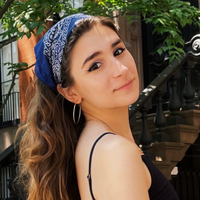
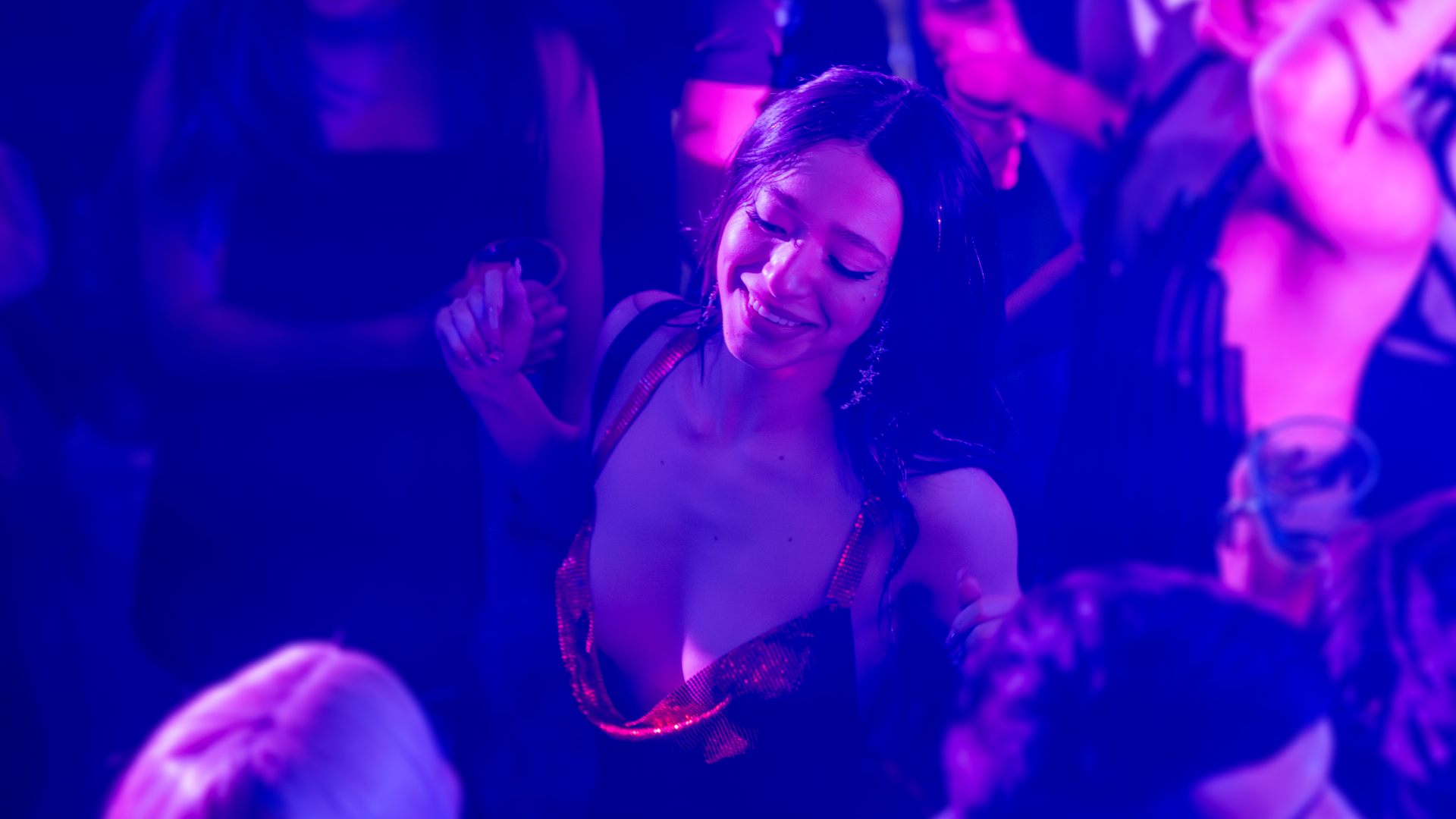
The way Mikey Madison thoroughly embodies the titular character in Sean Baker’s latest film Anora—effortlessly spinning around a pole and mindlessly performing lap dances while chewing on bubblegum—you would never know she had zero dance experience before starring in the film. To portray the 23-year-old sex worker from Brooklyn’s Brighton Beach neighborhood, Madison voraciously consumed whatever media she could, spent time visiting strip clubs, and trained with professional choreographer Kennady Schneider.
Schneider acted as Madison’s movement consultant on the film, working with the actress to define how Anora (or Ani, as she calls herself) would perform in the club and carry herself while interacting with clients. The two collaborated two days a week for three months before the film went into production, and they continued choreographing over Zoom when filming began.
“She was working before she was working,” says Schneider of Madison, whose transformation she’s “so proud of.”
Beyond finding an “amazing person to work with” in the 25-year-old actress, Anora was a full-circle moment for the L.A.-based dancer. Schneider first developed her knack for choreography in her 20 years as an elite gymnast, crafting floor routines for herself and her teammates. Then, while studying photography and film in university, she continued to see movement as a “creative outlet,” and learned the art of pole dancing while simultaneously working in strip clubs. Immersing herself further in the community, she built her reputation as an instructor, practicing with and choreographing for other women in the field.
She couldn’t be more honored that Anora is her first major film credit as a movement consultant. “It creates such a multilayered portrait of a dancer, and displays a dancer's story on such a human level,” she tells Marie Claire. (The film joins a long list of Baker’s projects, including Tangerine, The Florida Project, and Red Rocket, that aims to destigmatize sex work.) “Often, I feel like our stories are flattened and fetishized or glamorized in a way, so it does feel really grounded and important that this film is engaging with the community as a whole.”
As Anora arrives in theaters on October 18, Schneider opens up to Marie Claire about being surprised by Madison’s skills, teaching her how to twerk, and their vulnerable conversations about what it’s like to work in a club.
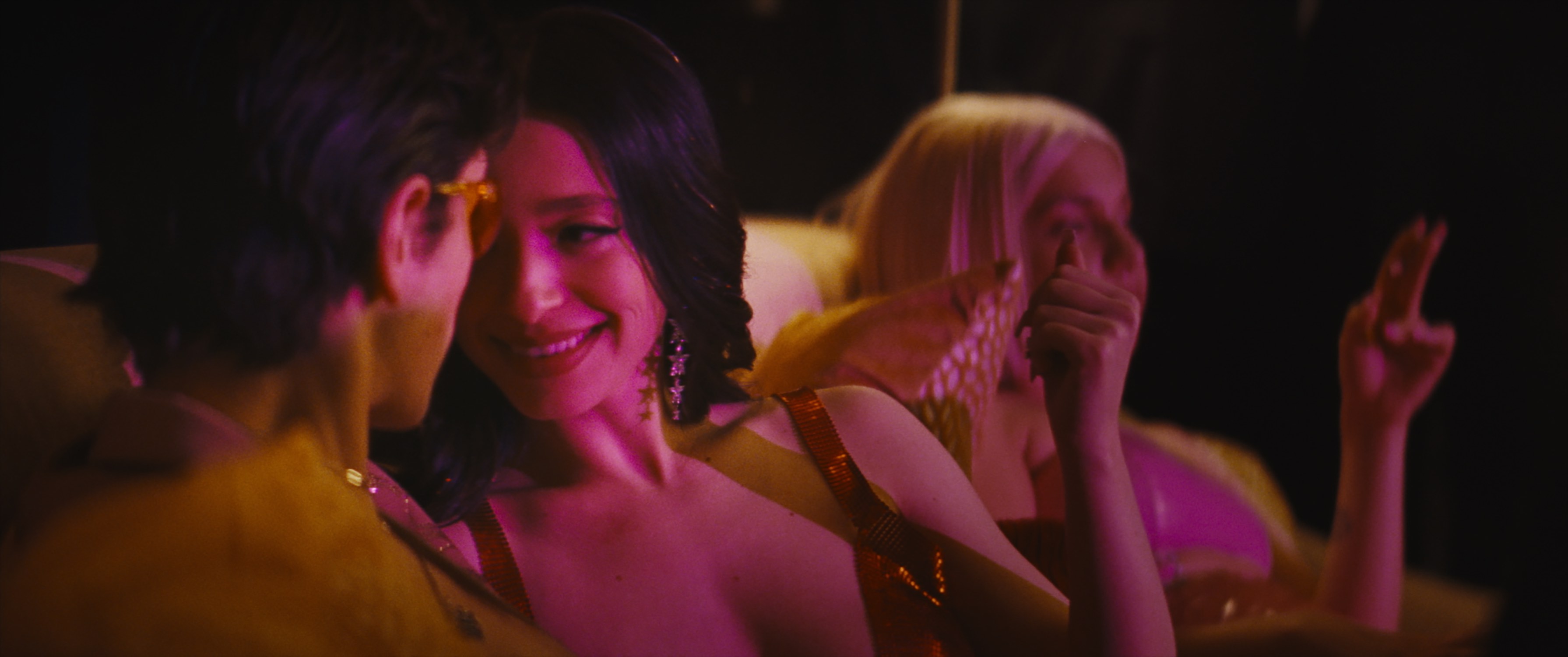
Ani (Mikey Madison) as she meets Ivan (Mark Eydelshteyn), who hires her for a week, in Anora.
MC: Mikey didn’t have dance experience before Anora. What was it like working with her? Did she come in nervous on day one?
Get exclusive access to fashion and beauty trends, hot-off-the-press celebrity news, and more.
Kennady Schneider: The first time I saw her move, I was like, ‘Oh, she got it.’ She has this movement quality that's so natural. I was shocked when she told me she didn't have any dance background.
It felt like she approached embodying this character and the story with an attack that was so driven and so passionate. If she was nervous, I didn't see it because I know that she was so dedicated and wanted to really learn this craft and understand the movement and its origin; learn from the people who are creating this work.
While we were learning, there was a lot of back and forth and conversation because pole dancing has a lot of different genres. It can look like ballet, it can look very angelic and polished, and it can also look very raw and powerful. Watching Mikey, it was wonderful to see the raw edges in the way that she dances and the groundedness and intuition that she had that maybe wasn't polished to perfection like a ballerina. We decided to lean into those imperfections and that rawness because that is more true to who the character of Ani is, and more true to the styles of dances you see in the club. It's very different to learn pole dancing in a pole dance studio than it is to learn in the club as a means of necessity. So for us, it was finding that balance of the technique with the tricks, but also the rawness and the realness that comes from working in the strip club.
MC: Mikey has a co-choreographer credit in the film. Were the two of you developing her dances, like the private “schoolgirl” routine she does for Mark Eidelstein’s character Vanya, together?
Schneider: I would come up with steps based on the skills we learned and built together over time, and then from there, I trusted Mikey with making her own decisions on how she saw Ani doing these dance moves and how she was relating to the character with this routine. She took the blueprint and the steps and the tips that I gave her and adapted that to the scene, to the set, to how she was feeling her character would respond in those moments.
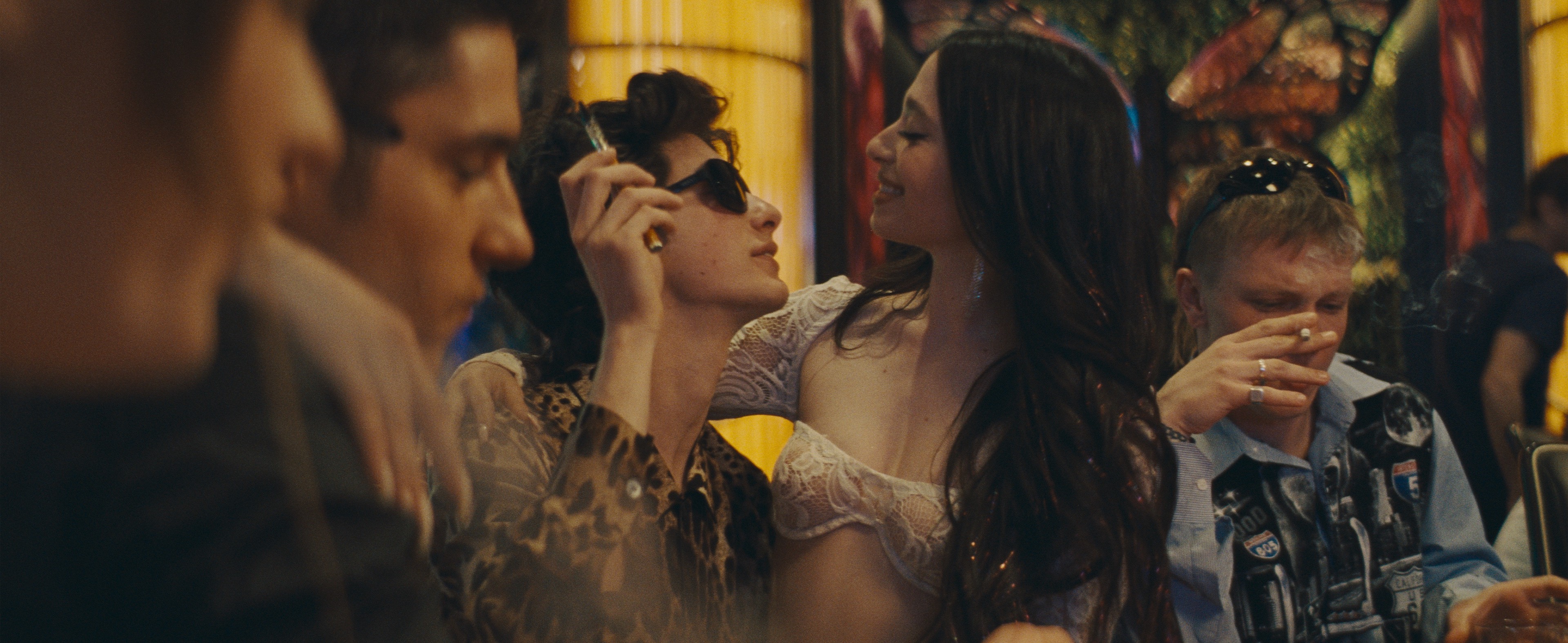
Ivan and Ani share a moment while partying in Las Vegas.
MC: Dancers in clubs can embody different personas for their clients. Did you have conversations about how she might move and present her body, beyond the dances you worked on together?
Schneider: I was focused on choreographing for the camera and making compositions and frames that would present in an interesting way—and also remain authentic to what a lap dance feels and looks like and what a private room with a pole might feel and look like. We did talk about, ‘Okay, with different clients, this is what I would do in this situation,’ but most of what I told her and what we worked on was very position-based. ‘If the client is sitting like this, this is a way that you can feel more subtle when you're dancing with them. This is a way to be more aggressive.’ You have to be able to make those decisions on the fly and adapt your movement to the space you're in and how you're wanting to feel.
We did talk about more intimate lap dances with Vanya and how that might feel compared to, say, a group of bachelors where she's on the pole and she's like a party girl. It's going to be a much more fun and playful movement than an intimate lap dance with a love interest. So we worked on movement subtleties and she really took that and ran with it in the film.
MC: Did Mikey surprise you in any way?
Schneider: Oh my gosh, yes. I think that first session we had was my moment of surprise and shock. I was like, ‘This person is so special in the way they move, and their need and want to do this to such an amazing degree.’ She showed me some videos on Instagram. She was like, ‘Is this possible for us to get this done in this amount of time? I want to go upside down. I want to be doing this stuff.’ And I was like, ‘Yes! Yes, we can do this. Just trust me. It's going to take some time to get there, but you will get there.’ I know that she trusted me with my timeline, making sure that she learned these things safely, and was able to adapt [the moves] and put her own spin on them by the time filming came up.
We were able to accomplish everything that she wanted to. I was really surprised by her determination and push, because pole dancing is very painful, and we would practice together twice a week and she'd practice on her own in between our sessions. So every single time I would come back, she would have grown exponentially faster than anything I could have imagined because she was so determined to nail these tricks, feel these movements, and be comfortable with the movement style that she was given.
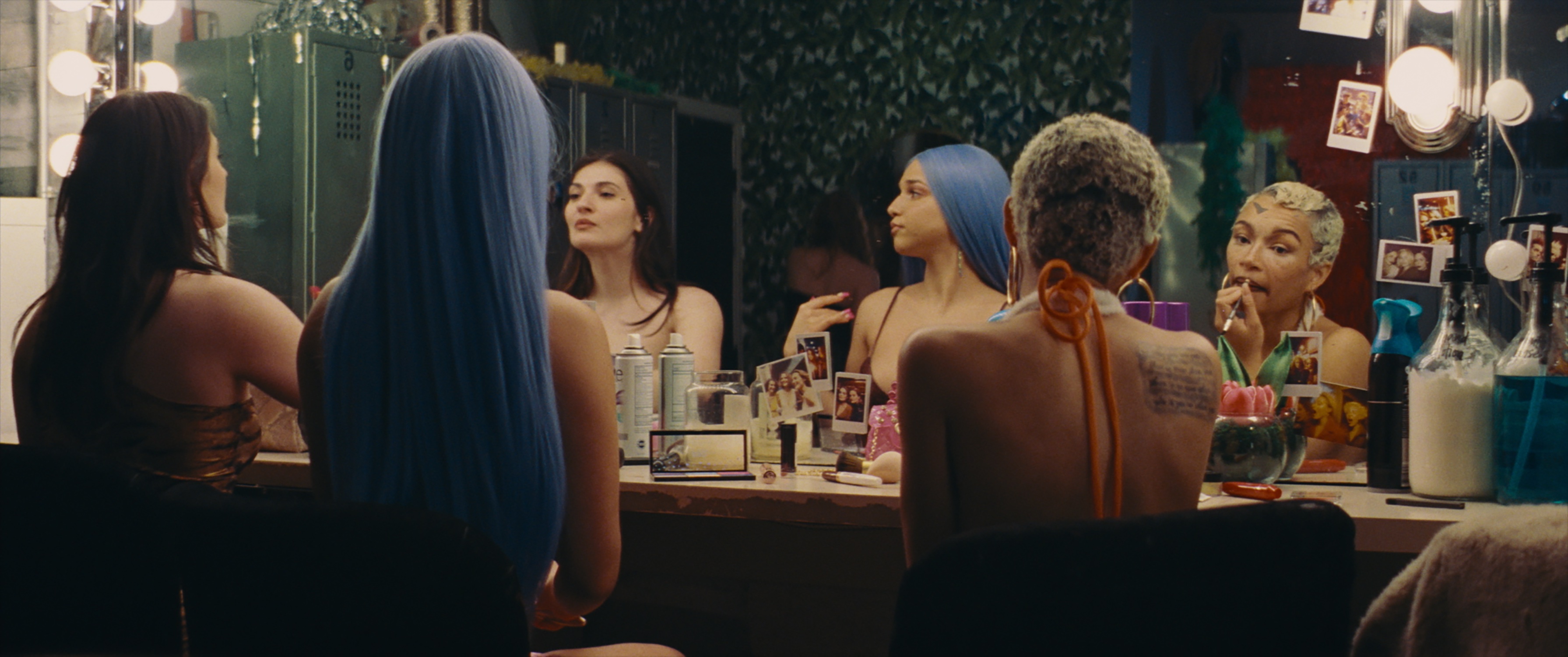
Ani's colleagues as they're getting ready in the dressing room at HQ.
MC: What music were you listening to during practice? Did you know the songs that were going to be in the film to be able to choreograph to them?
Schneider: We didn't know what songs were being used in the film, but we did have songs that were in the process of being approved for the film or a possibility. We also had music that [Mikey] liked that was on theme. From experience as a dancer, things in production change so much and last minute, so I felt like it was my job to not get attached to any single song and let her know that we can't be too attached to one thing until everything's set in stone.
We were practicing to a Charli xcx-type vibe—very fun, bratty songs that were female artist-based. I also thought that it was important that the movement and the routines that we made could be adapted to many different songs and styles. We did talk about that, [like], ‘If this is the song, you might dance the same move but more aggressively, and how does that look when you do this more aggressively versus a softer song? What does it feel like to make it more sensual and slow?’
MC: What was your favorite practice or moment from working so closely with Mikey?
Schneider: One of my favorite memories is when I was teaching Mikey how to twerk. It's such a vulnerable thing to teach.
MC: At the screening she hosted for sex workers, she called you out and specifically mentioned how you taught her to twerk!
Schneider: Twerking is very vulnerable to teach because nobody's really good at it when you start, so you feel silly when you're learning this skill. I showed her and taught her how I twerk, and then we started working on it and I was like, ‘Girl, I feel like this is just about being silly and putting on a song and shaking ass for the length of the song.’ My advice to her was like, ‘Okay, when you're cooking, maybe put on a song and just twerk. Twerk around the house, twerk when you're waiting to do something, twerk when you're on a call with someone.’

Ivan and Ani during their Las Vegas rendezvous.
MC: Anora has been praised for its honest portrayal of sex workers and positively received by sex workers themselves. How has it felt to be part of a project that so authentically represents the community?
Schneider: A lot of times, stories are told about certain communities without consideration for these communities and how it impacts these communities. Even to have a production film at a club, however long [they’re filming] puts the girls who work there out of work for X amount of time. I know it's special to have the dancers [from HQ, the Manhattan club where the movie was shot] on set and as background, so they're still employed for that amount of time. A lot of times, that's not the case, and outside background is brought in, or there's a lack of consideration for how these projects impact the community around them.
I feel like [with] this project, there was always a consideration for the sex worker community and including us as a whole—even the gesture of having a screening just for us. I am not aware of anything else that's happened like that. It makes it feel like the film is in conversation with the things we experience and how our existence is at the foundation of this story. So for me and other people in the community, that's what I felt. There does seem to be an inclusion of this world and of this economy that we create and benefit from. It feels really special as a project.
What are some misconceptions about the sex worker community that you think Anora dispels, or what representation on screen felt revelatory to see?
Schneider: There's a montage at the beginning of the film following Ani through her night shift. I felt like it was a real picture of what it's like to move through that type of space as a person trying to pay rent, trying to make money at work, and the way that we have to navigate through so many interfaces with men of very different backgrounds and demographics, and not only how it can be rewarding at times, but how it can be very draining, and how every interaction you have with another person at the strip club is an energy exchange no matter what. We get to see her game and how she sells dances in private rooms, but also how she's rejected by clients and people in the club. We get to see her interactions with other dancers in the club and how that can be a complex interaction because, while these women are your safety in some capacities, there is competition and a need to make money and present yourself in a certain way.
A lot of times depictions of the strip club can be glamorized—with money flying from the air and all these pretty lights and the women looking like goddesses getting money dumped on them. A lot of scenes that I've seen before in different visuals or films depict that part of the job and not the other side, the mundane or the in-betweens of those moments.

Sadie Bell is the Senior Culture Editor at Marie Claire, where she edits, writes, and helps to ideate stories across movies, TV, books, music, and theater, from interviews with talent to pop culture features and trend stories. She has a passion for uplifting rising stars, and a special interest in cult-classic movies, emerging arts scenes, and music. She has over nine years of experience covering pop culture and her byline has appeared in Billboard, Interview Magazine, NYLON, PEOPLE, Rolling Stone, Thrillist and other outlets.